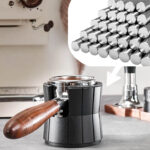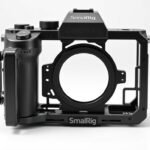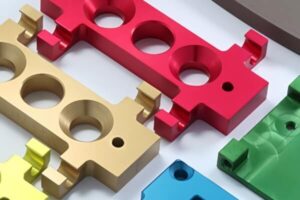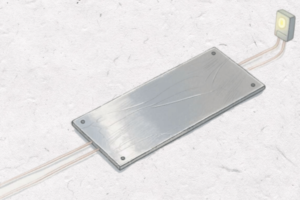Camera rig cages have become essential tools for videographers and filmmakers looking to enhance their production quality. These versatile accessories transform basic cameras into professional rigs by providing protection, stability, and expanded functionality. Whether you’re shooting a documentary, creating content for social media, or filming a feature, understanding camera cages can significantly improve your workflow and final output.
What Is a Camera Rig Cage?
A camera rig cage is a protective frame that surrounds your camera body while providing multiple mounting points for accessories. Think of it as an exoskeleton for your camera that serves both protective and functional purposes. Made typically from lightweight yet durable materials like aluminum, these cages create a versatile platform that transforms a basic camera into a complete production system.
The primary purpose of a camera cage is to expand your camera’s capabilities by allowing you to attach various accessories such as microphones, monitors, lights, handles, and follow focus systems. This customization enables you to build a rig tailored to your specific shooting requirements while maintaining stability and protecting your valuable equipment.
Key Components of Camera Rig Cages
Understanding the various components of a camera cage will help you choose the right one for your needs. Here are the essential elements that make up a comprehensive camera rig cage system:
Base Frame
The main structure that surrounds your camera body, providing protection and the foundation for mounting accessories. Quality cages are precisely machined to fit specific camera models, ensuring access to all buttons and ports.
Mounting Points
These include numerous threaded holes (typically 1/4″-20 and 3/8″-16), allowing you to attach various accessories at multiple points around the cage. More mounting points mean greater flexibility in your setup.
Top Handle
Provides a comfortable grip for low-angle shooting and carrying your rig. Many top handles include additional mounting points for accessories like microphones or small monitors.
NATO Rails
These standardized rails allow for quick attachment and removal of compatible accessories without having to unscrew anything, making on-set adjustments much faster.
Rod Support System
15mm or 19mm rods extend from the cage, providing support for heavier accessories like follow focus systems, matte boxes, and larger monitors.
Baseplate
The foundation of the cage that attaches to your tripod and provides stability. Quality baseplates often include Arca-Swiss compatibility for quick release functionality.
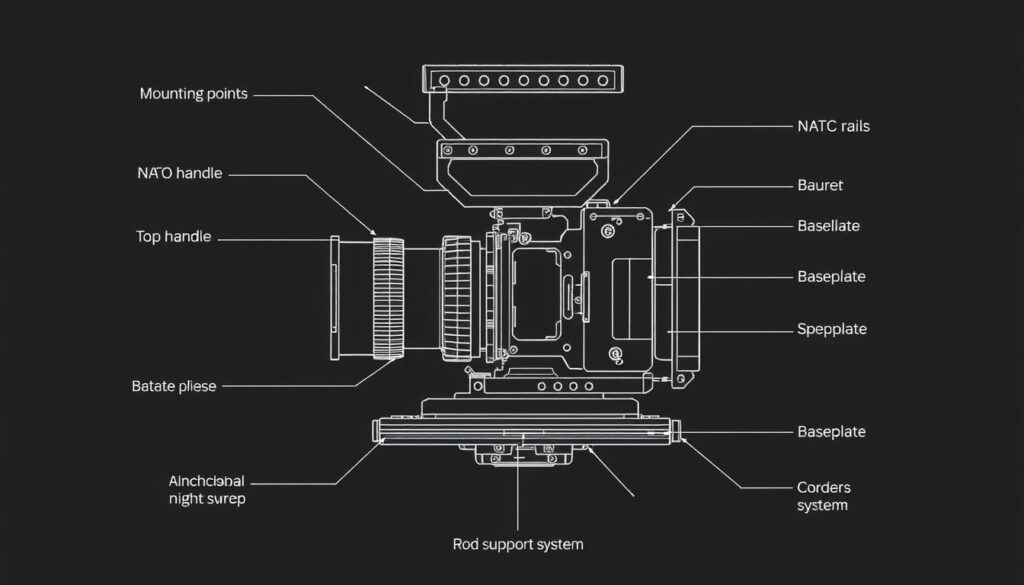
Essential Use Cases for Camera Rig Cages
Camera cages serve multiple purposes across different filming scenarios. Here are the primary situations where a camera rig cage becomes invaluable:
Stabilizing Shots
The added weight and ergonomic handles of a cage system improve handheld stability, reducing camera shake. This is especially important when shooting without a gimbal or tripod.
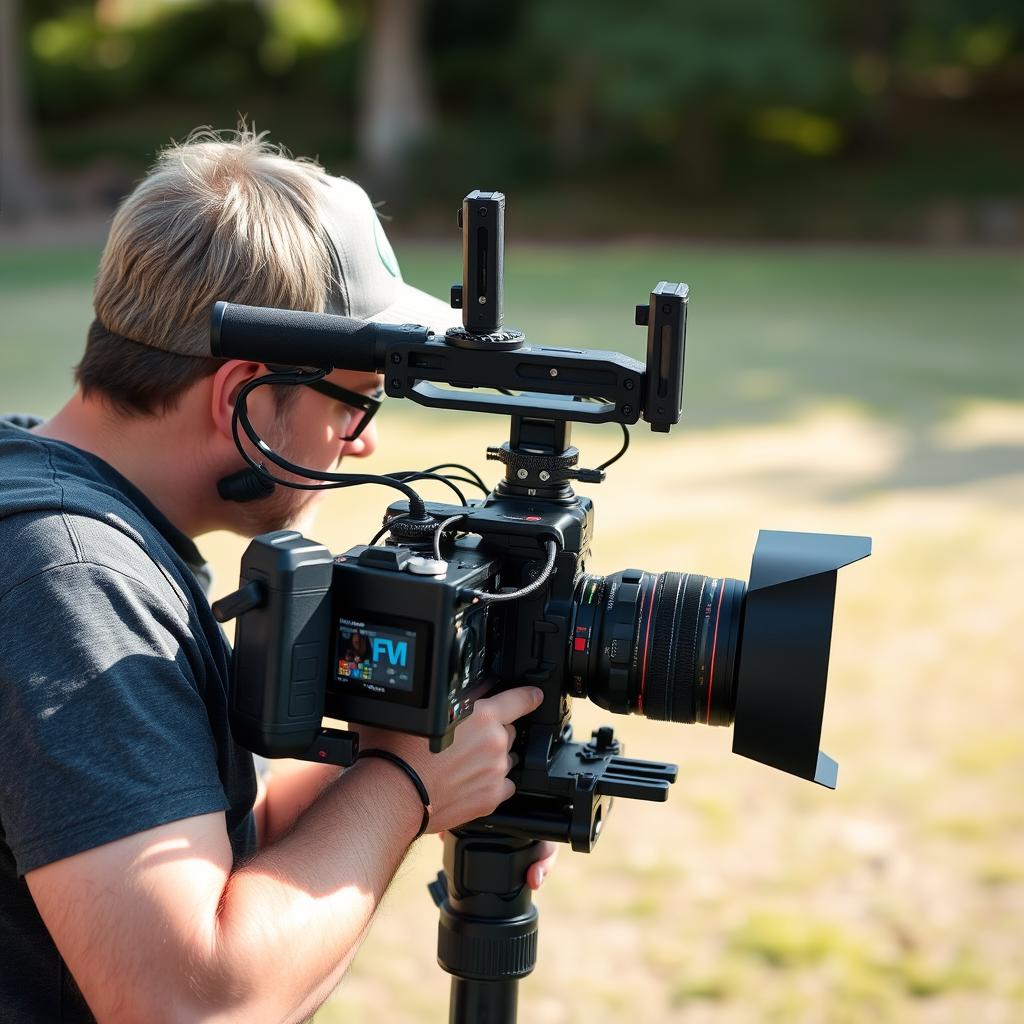
Mounting Accessories
Attach essential gear like microphones, LED lights, monitors, wireless transmitters, and external recorders to create a complete production setup.
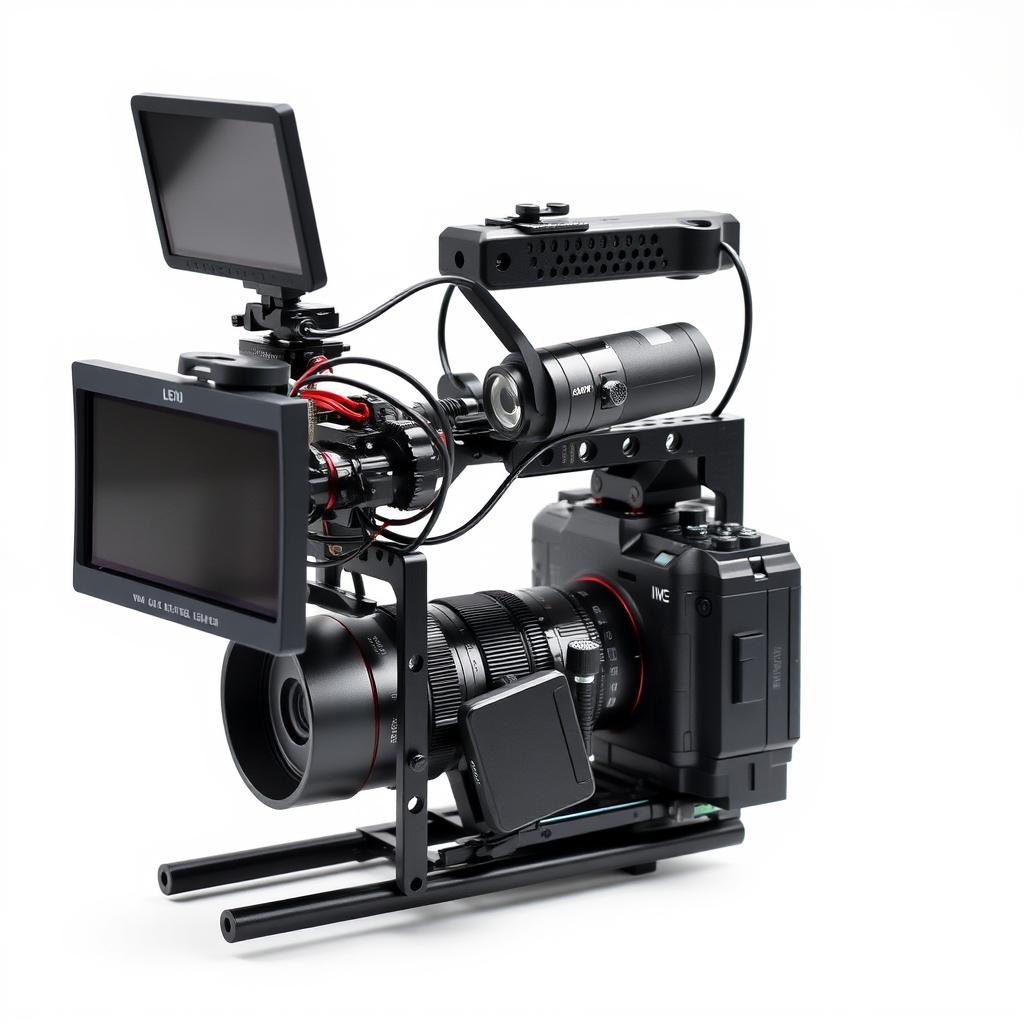
Protecting Your Camera
The metal frame shields your camera from bumps and impacts during active shooting, providing valuable protection for your investment.
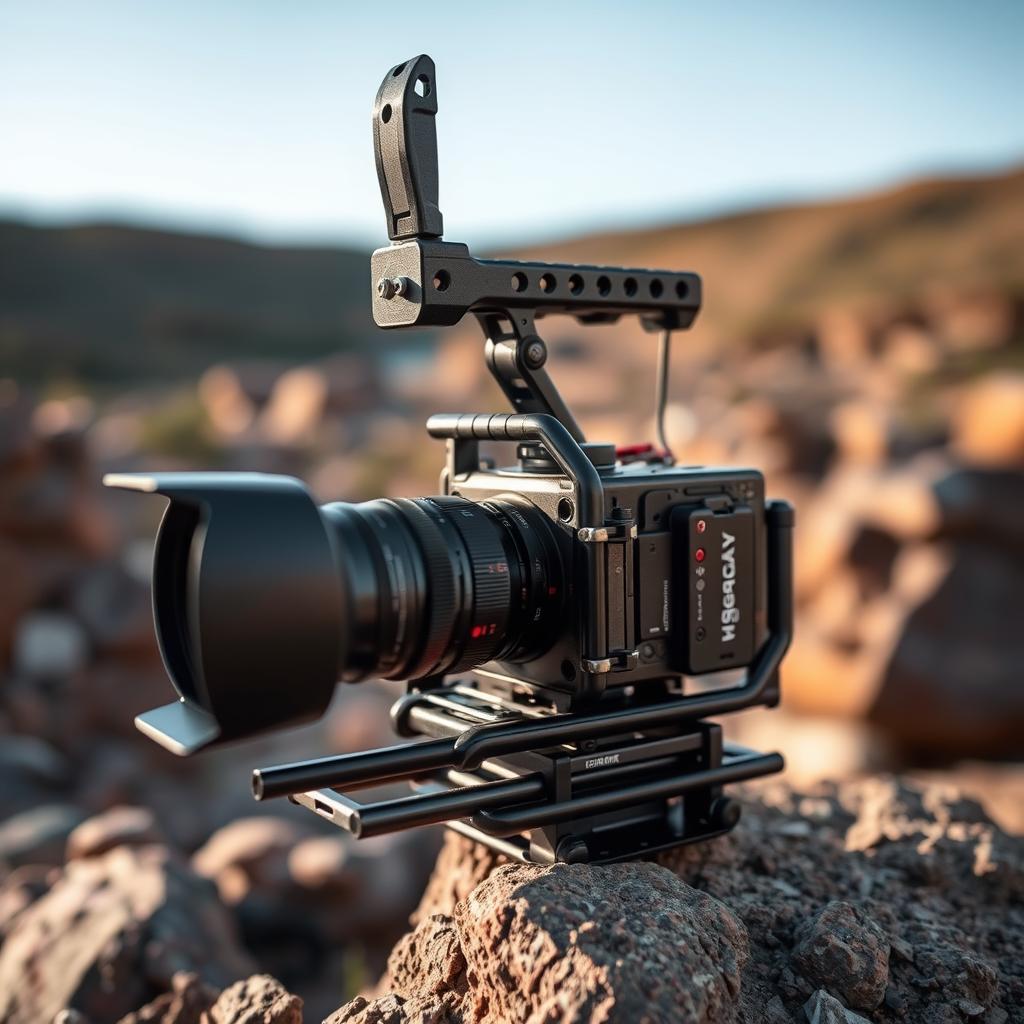
Professional Setups
Transform consumer or prosumer cameras into professional rigs that can compete with higher-end cinema cameras for certain productions.

Documentary Filming
Create a versatile rig that can quickly adapt to changing documentary shooting conditions while maintaining professional quality.
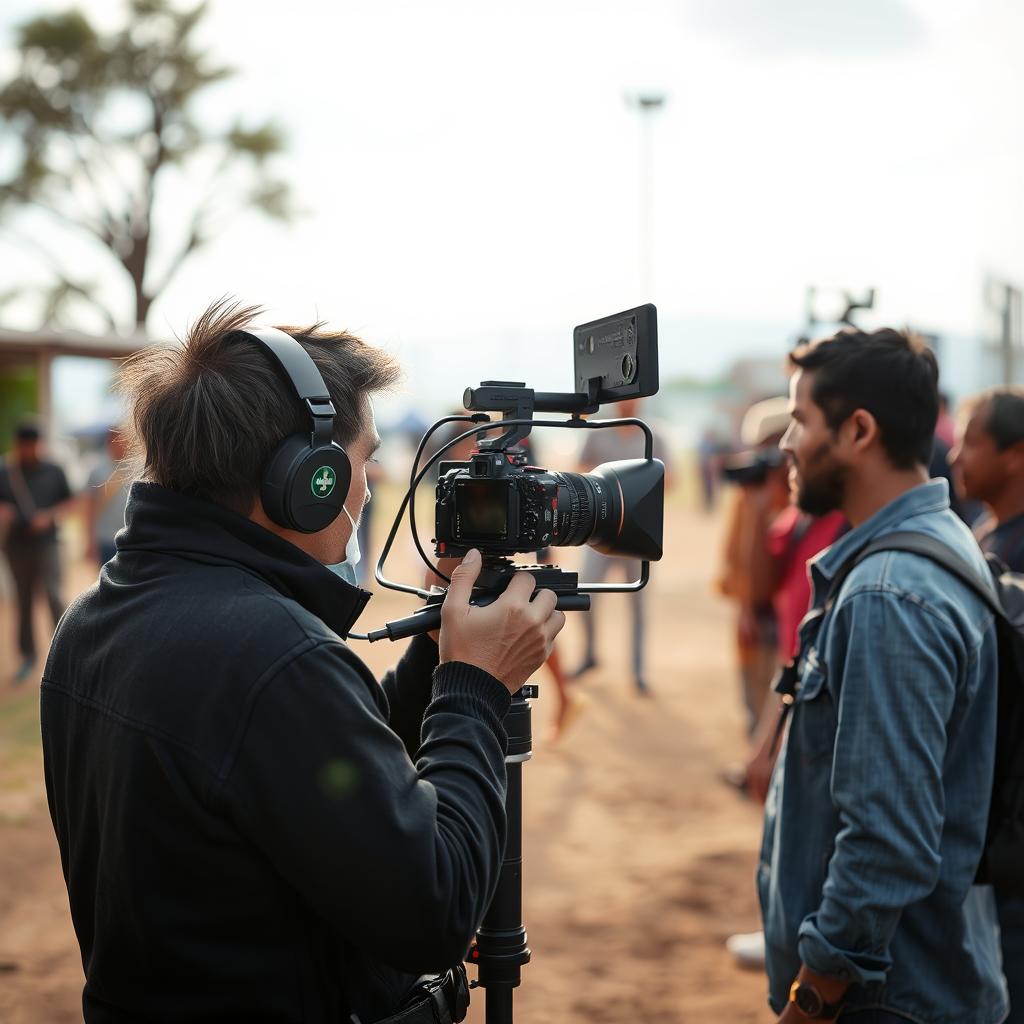
Studio Production
Build a comprehensive camera system for controlled studio environments where multiple accessories and precise control are required.
Key Benefits of Using Camera Rig Cages
Advantages of Camera Cages
- Enhanced stability for smoother handheld footage
- Comprehensive protection for your camera investment
- Expanded mounting options for accessories
- Improved ergonomics for extended shooting sessions
- Professional appearance for client shoots
- Modular design allows for customization based on shooting needs
- Better heat dissipation for cameras prone to overheating
- Cable management solutions for cleaner setups
Considerations
- Added weight to your camera setup
- Additional cost to your equipment budget
- Setup time required before shooting
- Learning curve for optimal configuration
- Less compact than a naked camera body
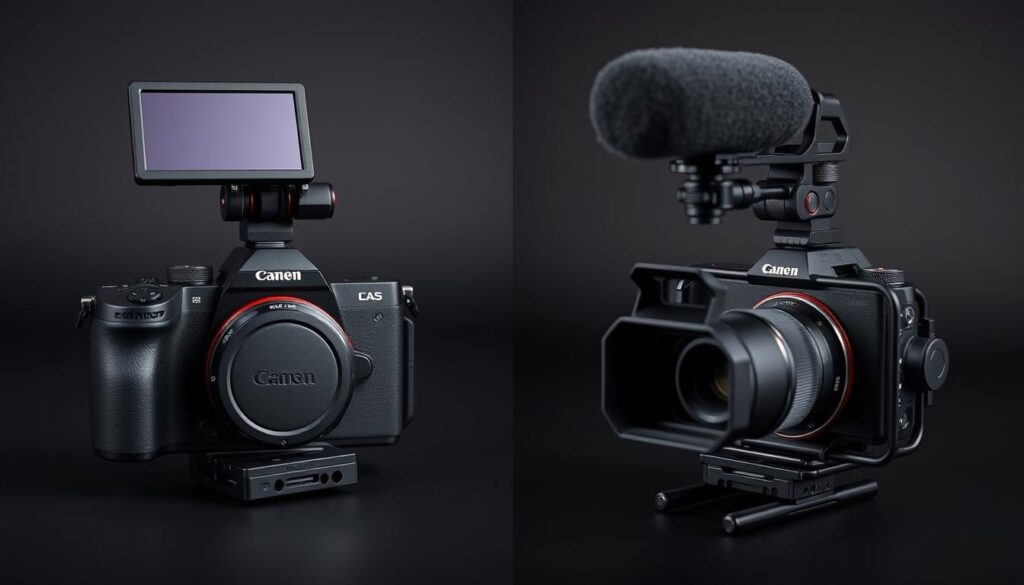
Pro Tip: When choosing a camera cage, prioritize models specifically designed for your camera body. Universal cages may be more affordable but often sacrifice perfect fit and access to camera controls.
Types of Camera Rig Cages
Camera cages come in various configurations to suit different shooting styles and camera types. Understanding these variations will help you select the most appropriate rig for your specific needs:
Handheld Cages
Designed for mobility and run-and-gun shooting, these cages typically feature ergonomic handles and lightweight construction. They prioritize comfort during extended handheld operation while still providing essential mounting points.

Shoulder Rig Cages
These combine a camera cage with shoulder support systems, allowing for stable shoulder-mounted filming. They typically include counterweights, shoulder pads, and extended handles for balanced, comfortable operation.
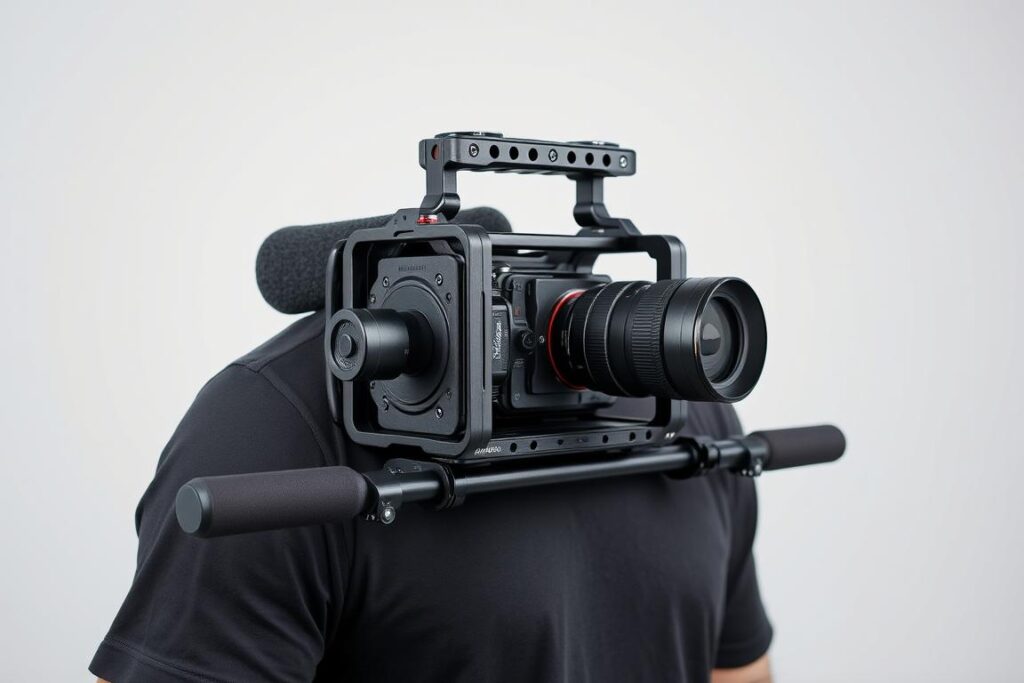
Studio Cages
Comprehensive setups designed for controlled environments where maximum accessory support is needed. These often include full rod systems, follow focus, matte boxes, and monitor mounts for complete production capability.
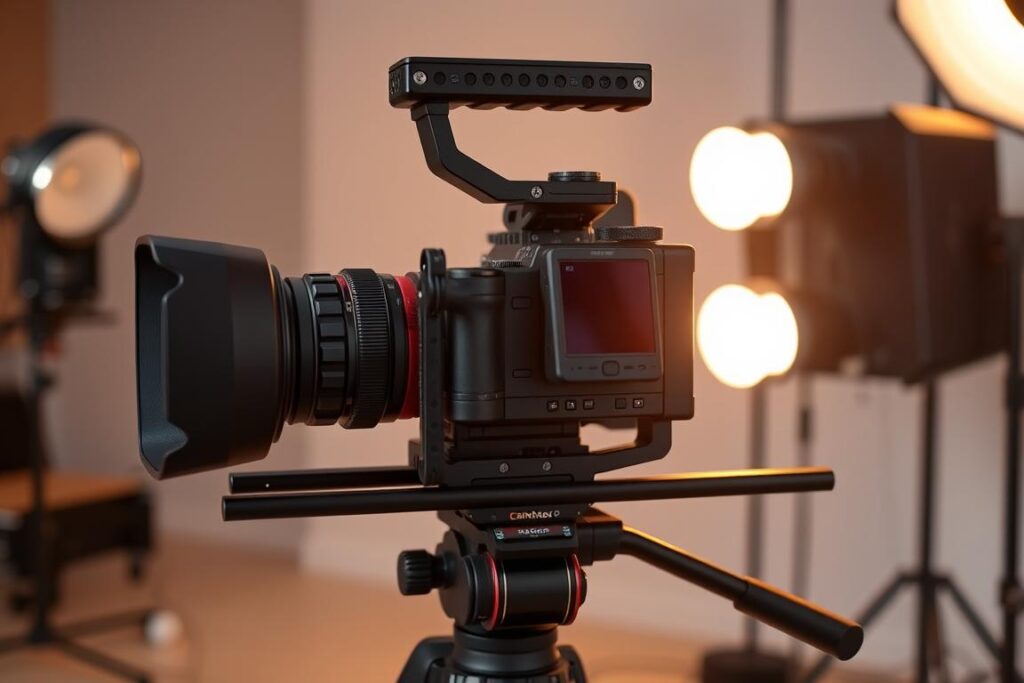
Minimalist Cages
Lightweight, form-fitting cages that add minimal bulk while still providing protection and basic mounting options. Ideal for those who want some benefits of a cage without significantly increasing their setup size.
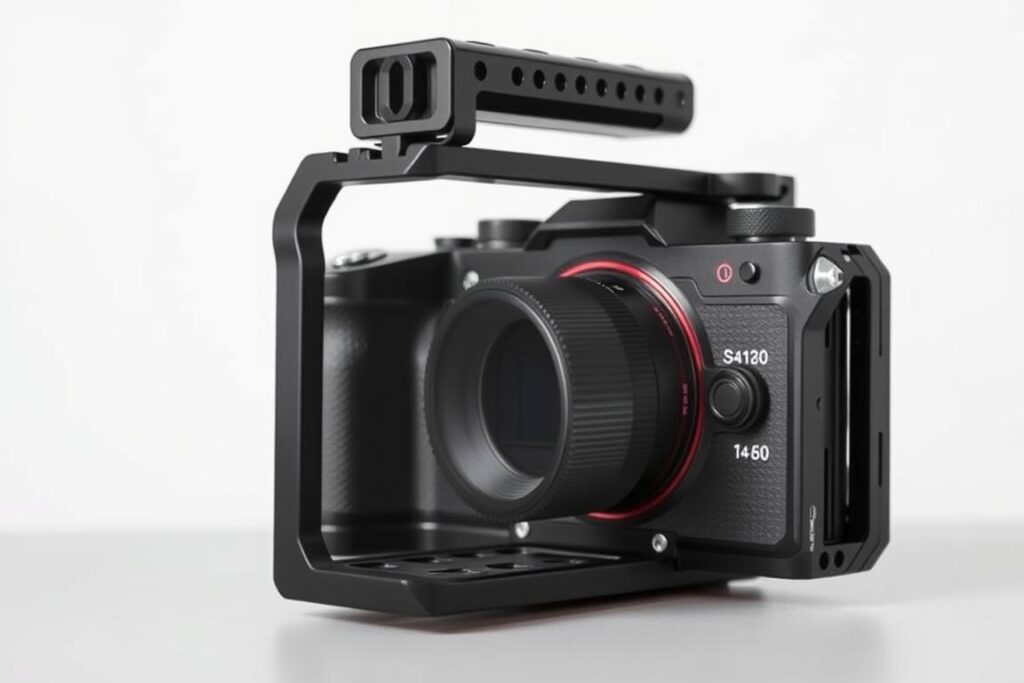
Camera-Specific Cages
Custom-designed for particular camera models, ensuring perfect fit, full access to all controls and ports, and optimal functionality. These provide the best integration with your specific camera body.
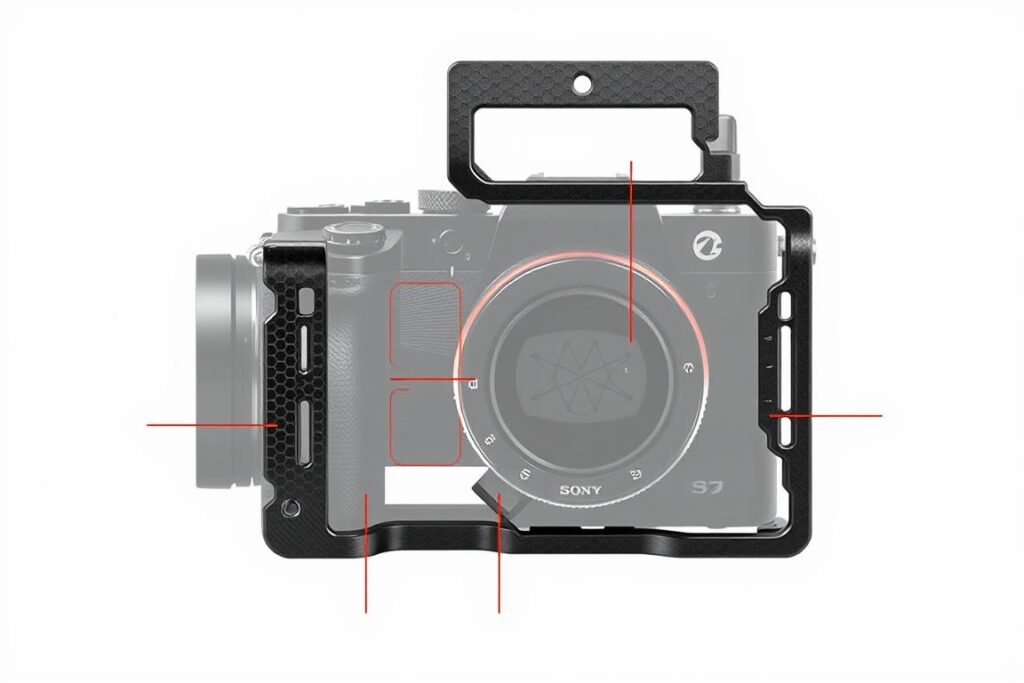
Universal Cages
Adjustable cages designed to fit multiple camera models. While less precise than camera-specific options, they offer flexibility for those who use different cameras or frequently upgrade their equipment.
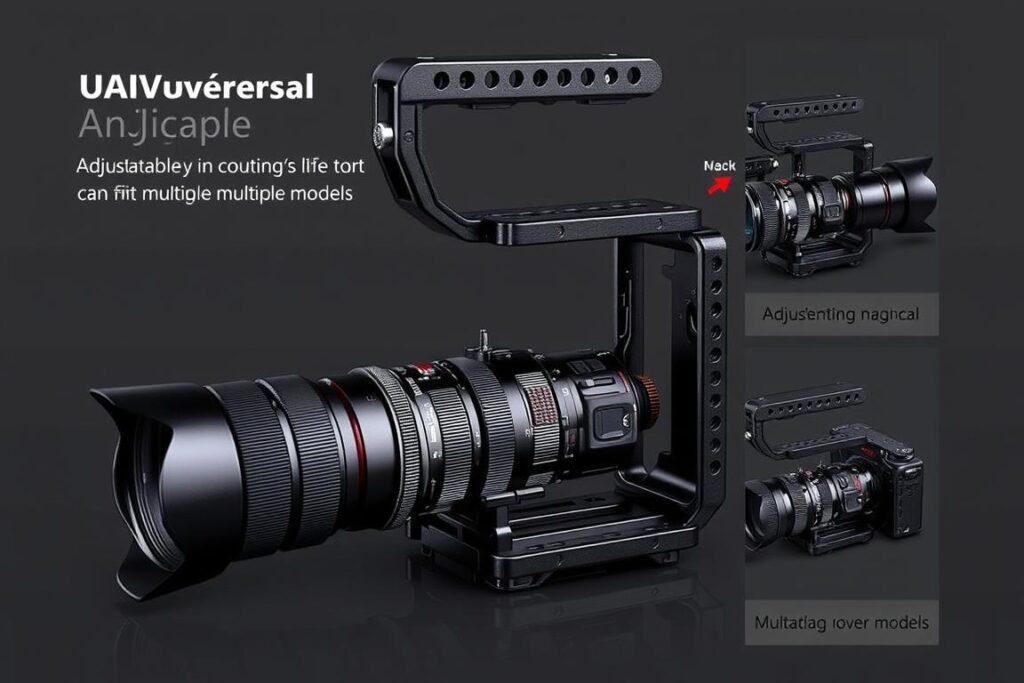
5 Essential Factors When Buying a Camera Rig Cage
- Look for aerospace-grade aluminum for optimal strength-to-weight ratio
- Check for CNC machining with smooth edges and precise cutouts
- Anodized finish provides better durability and scratch resistance
- Examine the quality of screws and mounting points for long-term reliability
1. Material & Build Quality
- Camera-specific cages offer perfect fit and full access to controls
- Verify that all camera ports and battery compartments remain accessible
- Check that the cage doesn’t block heat dissipation from the camera body
- Ensure the cage doesn’t interfere with articulating screens or viewfinders
2. Camera Compatibility
- Count the number and variety of mounting points (1/4″-20, 3/8″-16)
- Look for NATO rails for quick-release accessory mounting
- Check for cold shoe mounts for microphones and lights
- Verify compatibility with industry-standard rod systems (15mm, 19mm)
3. Mounting Options
- Balance protection with practical weight considerations
- Ensure handles are positioned for comfortable operation
- Consider the overall balance of your fully rigged setup
- Check that the cage design allows for extended shooting without fatigue
4. Ergonomics & Weight
- Consider future accessory needs and ensure the cage can accommodate them
- Look for modular designs that allow you to add or remove components
- Check compatibility with third-party accessories you already own
- Verify that the cage can grow with your production requirements
5. Expandability
Frequently Asked Questions
Do I need a rig cage for photography?
While camera cages are primarily designed for video production, photographers can benefit from them in specific situations. If you’re doing long exposure photography, working in challenging environments, or using heavy lens setups, a cage can provide additional protection and stability. However, for most standard photography work, a cage may add unnecessary bulk and weight to your setup.
Consider a cage for photography if you frequently switch between photo and video work, need to mount accessories like external flashes or triggers, or work in environments where camera protection is a priority.
Can rig cages work with smartphones?
Yes, there are specialized rig cages designed specifically for smartphones. As mobile filmmaking becomes increasingly popular, manufacturers have developed comprehensive smartphone cage systems that offer many of the same benefits as traditional camera cages.
Smartphone cages typically provide mounting points for microphones, lights, and lenses, while improving grip and stability. They’re ideal for content creators, mobile journalists, and filmmakers who use smartphones as their primary or secondary shooting device. When choosing a smartphone cage, ensure it’s compatible with your specific phone model and allows access to all necessary buttons and ports.
How much should I expect to spend on a quality camera cage?
Camera cage prices vary widely based on quality, features, and brand. Entry-level cages typically start around $50-100, mid-range options fall between $100-300, and premium cages from established brands can cost $300-500+. Complete rig systems with multiple components can exceed $1,000.
When budgeting, consider the value of protecting your camera investment and the production capabilities a quality cage provides. It’s often worth investing in a well-built cage from a reputable manufacturer to ensure reliability and compatibility with your specific camera model.
Conclusion: Is a Camera Rig Cage Right for You?
A camera rig cage is an invaluable tool for videographers and filmmakers looking to enhance their production capabilities. By providing protection, stability, and expanded mounting options, these versatile accessories transform basic cameras into professional rigs capable of delivering high-quality results.
Whether you’re a content creator, documentary filmmaker, or professional videographer, investing in the right camera cage can significantly improve your workflow and final output. Consider your specific shooting requirements, camera model, and budget when selecting a cage that will best serve your creative vision.




